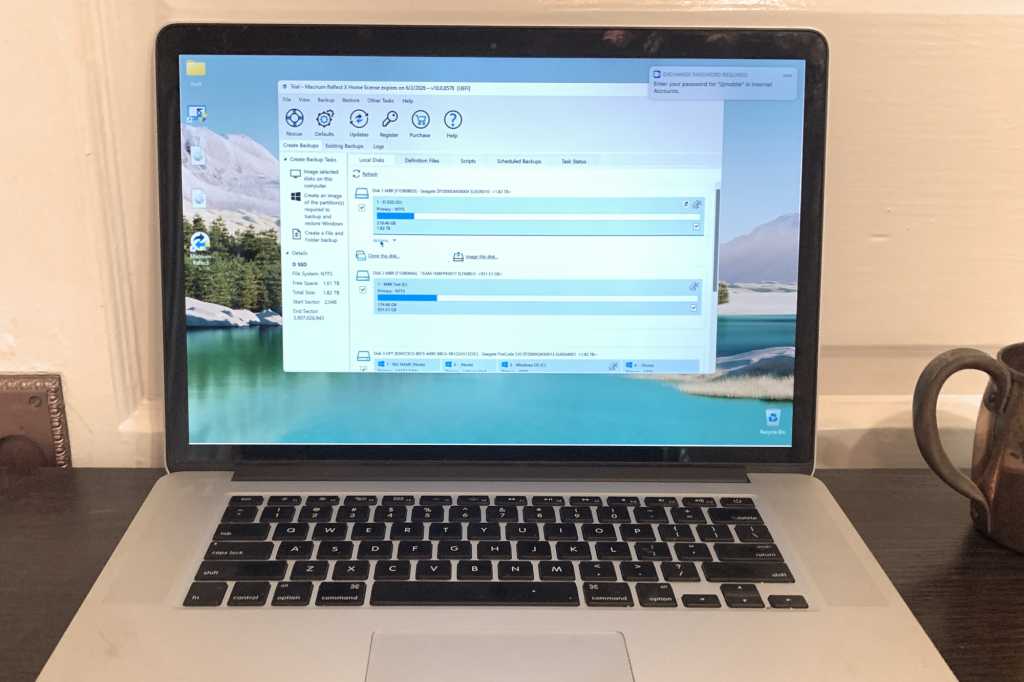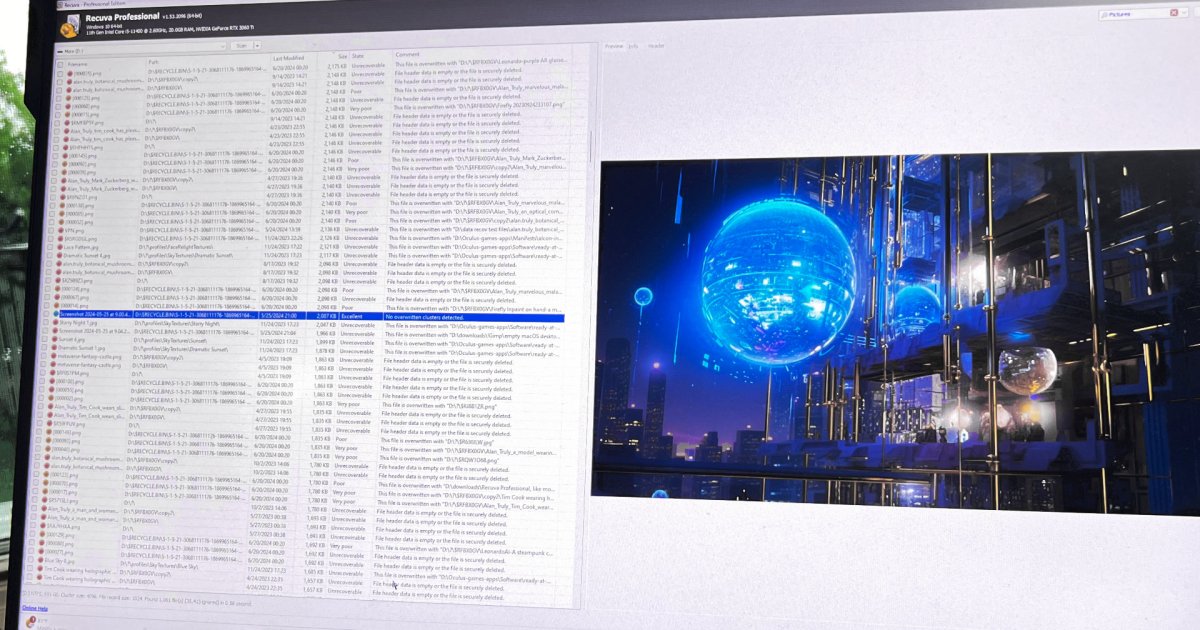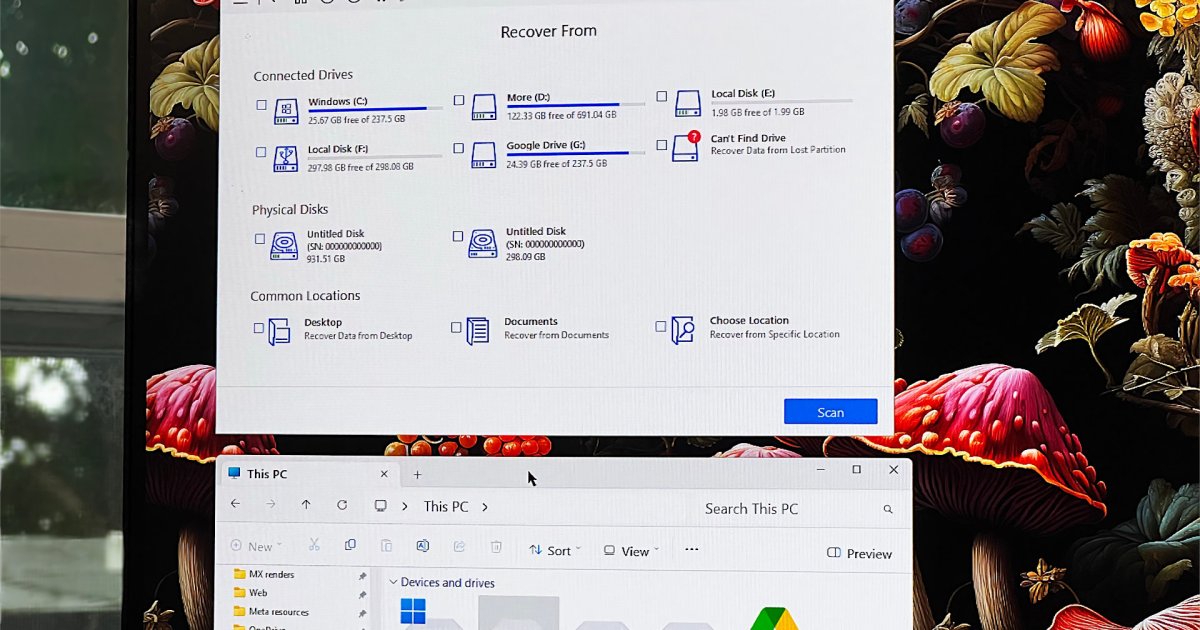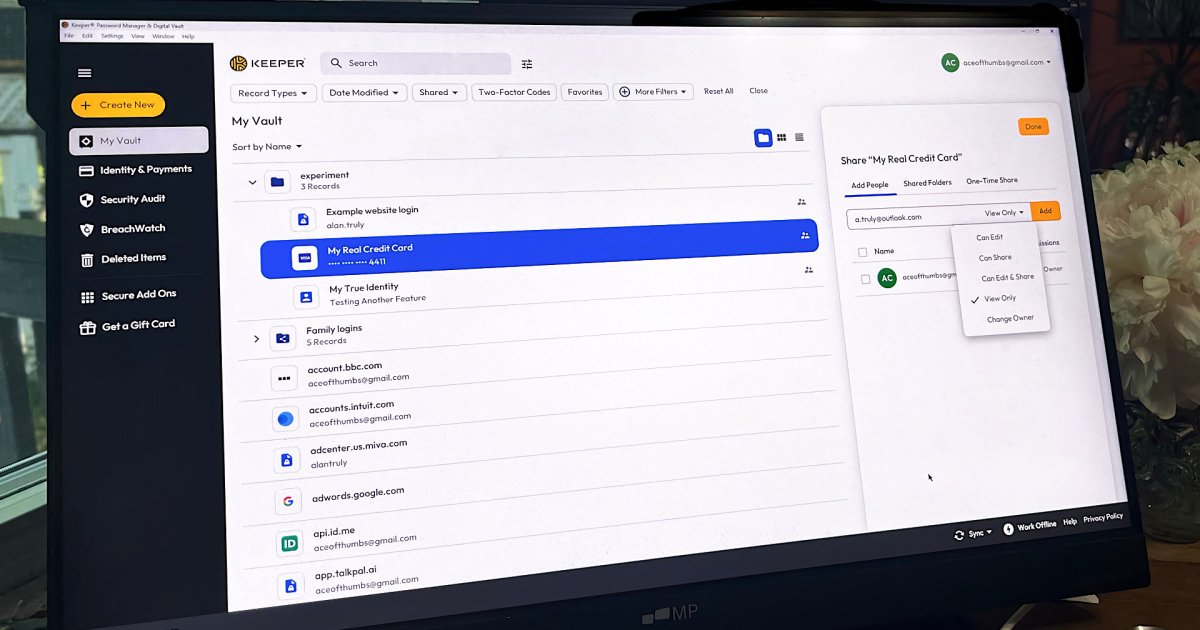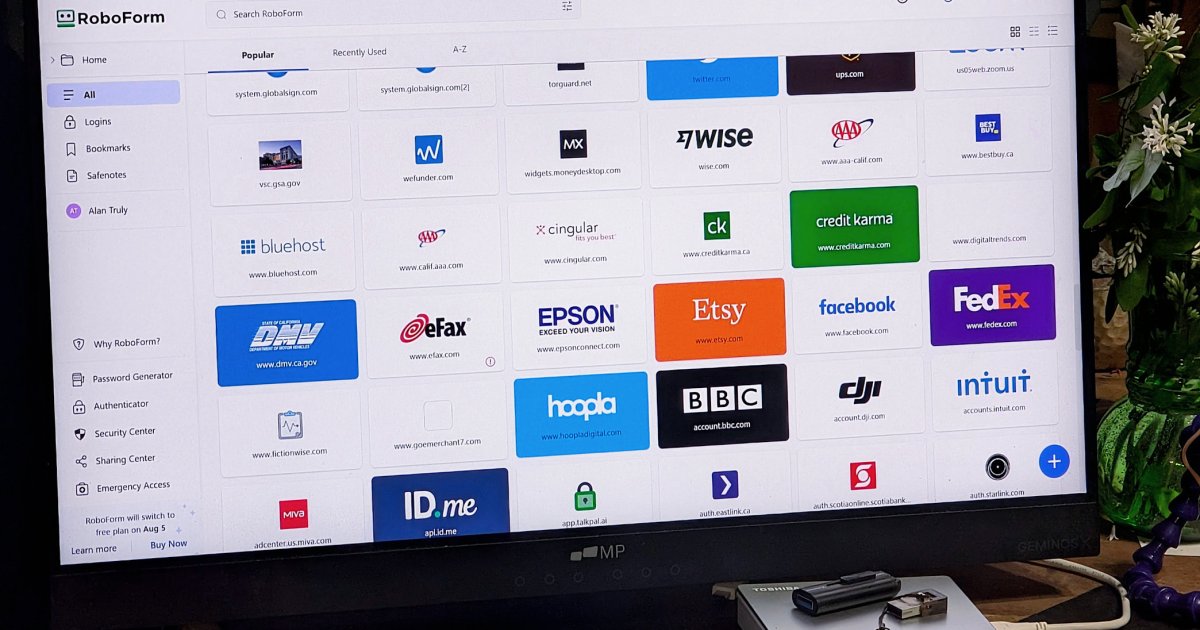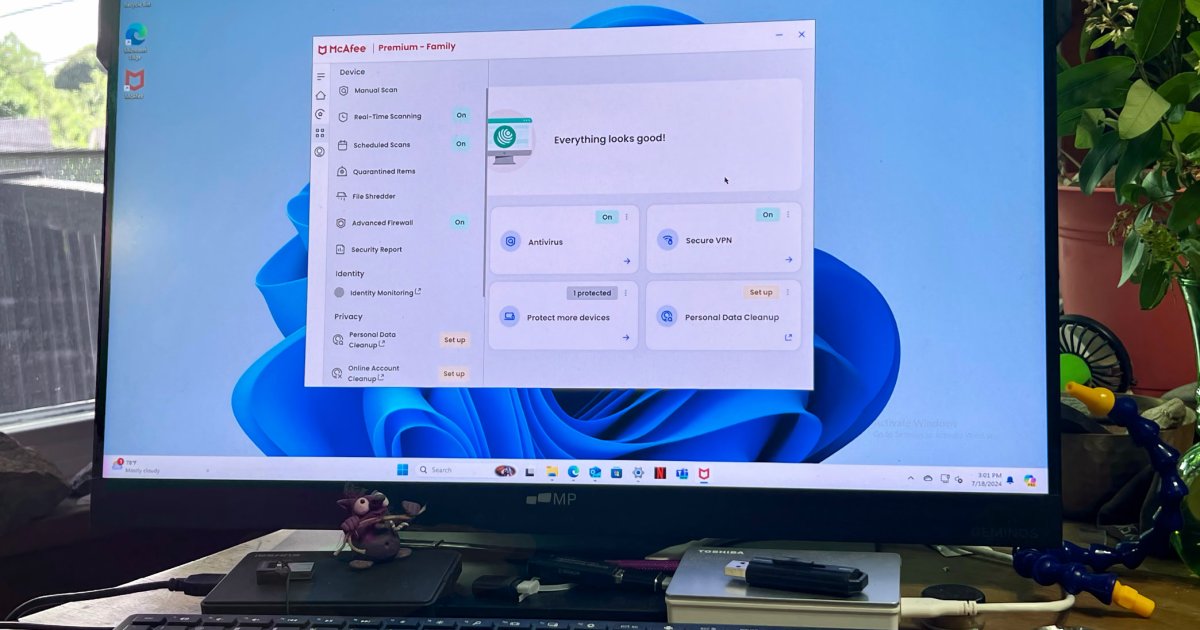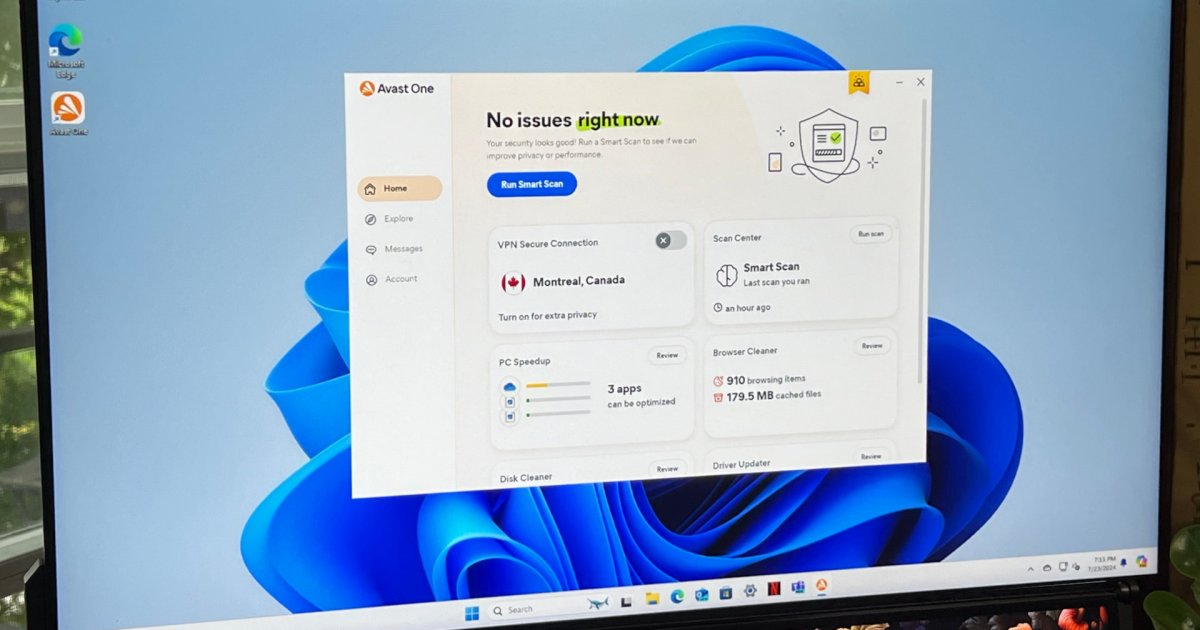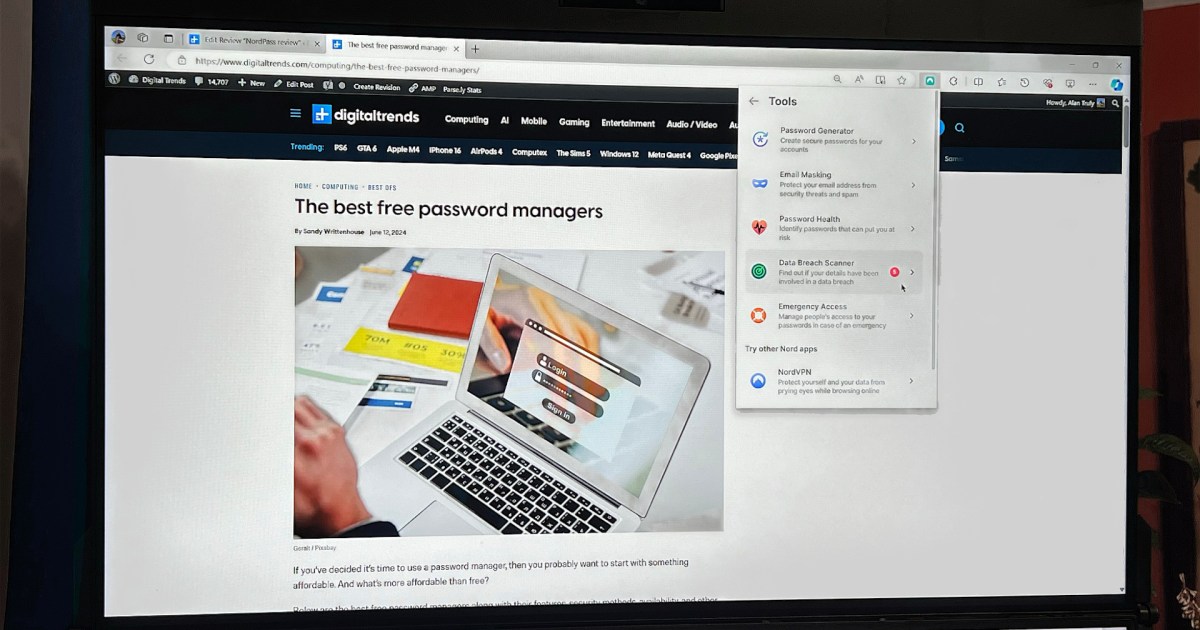Macrium Reflect X stands out as a premier disk imaging program, renowned for its incredibly fast performance, extensive configuration options, and a track record of high reliability in creating backups. This software excels at disk, partition, and file/folder backups, and even allows users to mount images as virtual machines, a significant plus for tech-savvy users. Furthermore, it incorporates features to protect backups from accidental or malicious alterations. However, the shift to a subscription-only model, priced at $50 per year, presents a considerable long-term cost, especially as it doesn’t include or natively support online storage solutions. This Macrium Reflect X review will delve into its capabilities, performance, and whether its robust feature set justifies the recurring expense for English-speaking users seeking top-tier data protection.
Key Features of Macrium Reflect X
At its core, Macrium Reflect X is a sophisticated imaging tool designed to create exact byte-for-byte copies of entire drives or specific partitions. This includes the option to copy “empty” sectors, a feature that can be invaluable for attempting to recover deleted or corrupted files. Beyond full disk imaging, it also supports creating backups of selected files and folders, saving them into the same type of container file for consistent management.
One of the most impressive aspects for backup enthusiasts is Macrium Reflect X’s ability to integrate full, incremental, and differential backup strategies within a single backup job, each with its own independent schedule. This level of flexibility is a significant advantage, as most competing software typically forces users to choose between incremental or differential methods for a given job. It’s a brilliantly executed feature that allows for highly customized backup routines. However, a similar flexibility for backup destinations is notably absent. Many users prefer to back up critical data to multiple locations, such as a local drive and one or more cloud services. Requiring users to recreate an entire job for each destination can be a cumbersome process.
 Macrium Reflect X interface showcasing backup creation options
Macrium Reflect X interface showcasing backup creation options
The user interface of Reflect X is well-structured, organized around three primary tabs: one for creating new backups, another for managing existing backups (for testing or restoration), and a third for accessing logs. Each of these main tabs contains sub-tabs for related tasks, such as managing scripts or backup definitions. This layout is generally intuitive and easy to navigate once familiarized.
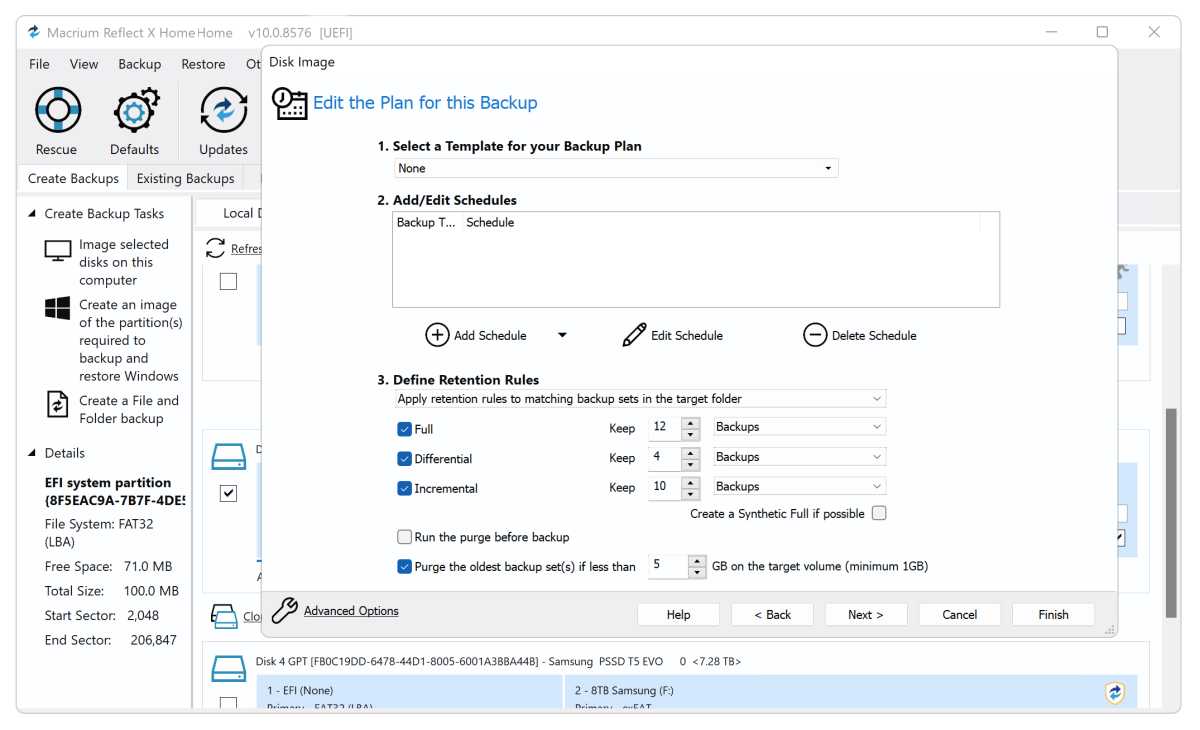 Macrium Reflect X advanced backup schedule with full, incremental, and differential options
Macrium Reflect X advanced backup schedule with full, incremental, and differential options
Creating a backup job is primarily handled through two dialogs: a main parent dialog that presents the major options, and an advanced-options child dialog accessible via an icon in the lower-left corner of the parent. While perhaps not as overtly simple as a step-by-step wizard, this approach is considerably faster once users understand the layout and where specific settings are located.
Reflect X introduces a secure background monitor, named Macrium Image Guardian (MIG), which actively protects your backup files from unauthorized changes or deletion, including ransomware attacks. Another standout feature is the integration of Oracle VirtualBox functionality, allowing users to directly mount their backup images as Virtual Machines (VMs). This viBoot feature is exceptionally useful for verifying backup integrity or accessing files and applications from a backup without a full restore.
 Macrium Reflect X VM mounter with a virtual machine running in VirtualBox
Macrium Reflect X VM mounter with a virtual machine running in VirtualBox
For disaster recovery, Reflect X includes a comprehensive Windows Preinstallation Environment (WinPE) based recovery disc. This bootable media is essential for restoring your system if Windows fails to start.
 Macrium Reflect X WinPE bootable recovery disc interface
Macrium Reflect X WinPE bootable recovery disc interface
Despite its strengths in imaging, Reflect X isn’t the most versatile backup solution. It lacks features like file synchronization or a plain-file backup option (simple copy with advanced filters). Most notably, it offers no direct support for online storage services, whether proprietary or third-party. Macrium has previously suggested that some competitors with foreign origins might pose security risks for cloud storage, though there’s no definitive proof of ill intent from these providers. Regardless, support for established and trusted third-party services like Dropbox, OneDrive, or Google Drive would be a welcome compromise, even if Macrium doesn’t offer its own cloud storage. Users can still use Reflect X to back up to the cloud, but this requires employing a separate cloud storage manager to sync the local backup repository. For those exploring alternatives, our roundup of the [internal_links] offers further comparisons.
What’s New in Macrium Reflect X?
Macrium highlights its new open-source file/image container format as a key development in Reflect X. In practice, this means that the specifications for the .mrximg / .mrxlog formats are available to developers. However, it doesn’t imply that these are commonly supported formats that can be mounted natively by Windows or other third-party utilities without Macrium software or custom development. For users with programming skills, this could theoretically offer a path to data recovery if the main program malfunctions. But for the average user, its immediate significance is limited, as they will still rely on the Reflect X application for restore operations until wider adoption occurs.
Another new addition is the ability to pause and resume backups. This can be convenient if you temporarily need to free up CPU resources for a demanding task. However, this functionality is limited to the current session; you cannot quit the Macrium Reflect X program or shut down Windows and expect to resume the backup later. It’s important to note that the previous major version of Reflect was 8.x. The company chose to skip version 9.x, branding this release as 10.x, or “X.”
Performance Benchmarks: How Fast is Macrium Reflect X?
Macrium claims a significant performance boost in Reflect X compared to version 8, and testing confirms this. Reflect X demonstrated impressive speed, completing a 240GB internal SSD-to-SSD image backup in a mere 2 minutes and 30 seconds. This is exceptionally fast.
Backing up the same data to an external 5Gbps SSD also yielded good results, taking approximately 7 minutes. Both tests indicated that the software was capable of maximizing the available bandwidth of the storage devices. Easeus ToDo Backup is one of the few other programs observed to achieve comparable speeds, though it has historically shown more non-fatal glitches.
A reinstallation and re-test of Macrium Reflect version 8 showed it to be considerably slower. The internal SSD-to-SSD backup took just over 9 minutes, and the backup to the external 5Gbps SSD (a Samsung T5 Evo) took slightly over 10 minutes. While the external SSD’s speed was a limiting factor in the second test for both versions, the time savings with Reflect X are substantial.
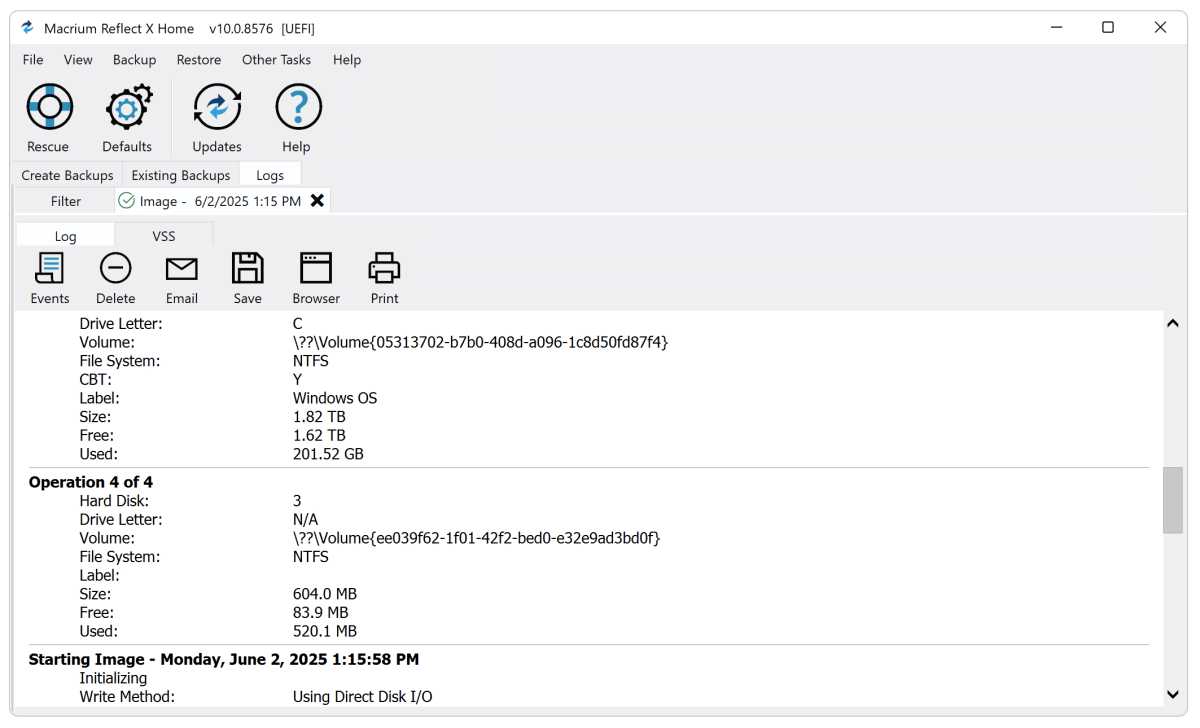 Detailed logs in Macrium Reflect X for troubleshooting backup issues
Detailed logs in Macrium Reflect X for troubleshooting backup issues
Of course, raw backup speed isn’t a primary concern for all users, especially since backups often run as background tasks. Macrium thoughtfully includes a throttle control on the backup progress page, allowing users to adjust CPU usage if needed. However, most modern systems equipped with SSDs are unlikely to require such throttling.
Macrium Reflect X Pricing: The Subscription Conundrum
This brings us to the most contentious aspect of Macrium Reflect X: its pricing model. To continue creating backups with the software, users must pay $50 annually. Macrium has transitioned from offering a free version of Reflect 8 for personal use to a subscription-only model for its latest iteration. If a subscription is discontinued, the program will remain functional for restoring existing backups, ensuring data remains accessible.
The core issue with this policy is that Reflect X is backup software, and its fundamental capability—disk imaging—is not expected to evolve as dramatically or frequently as features in creative software like photo or video editors. While Macrium could certainly add valuable features such as file synchronization, support for multiple destinations in a single job, and, crucially, native integration with online storage services, many users would likely prefer to pay a one-time upgrade fee or repurchase the software for major new versions rather than commit to an ongoing $50 annual subscription.
 Macrium Reflect X subscription pricing model with no perpetual license option
Macrium Reflect X subscription pricing model with no perpetual license option
Competitors like Acronis Cyber Protect Home Office (formerly True Image) also use a subscription model, but they often include relatively affordable cloud storage and additional features like malware protection, which can make their annual fees feel more justified to some users.
Our Verdict: Is Macrium Reflect X Worth the Price?
Macrium Reflect X is undoubtedly a very fast, highly competent, and historically reliable disk imaging program. Its feature set for creating and managing backups is robust, and the performance improvements over its predecessor are significant. The ability to mount images as VMs and the protection offered by Image Guardian are valuable additions.
However, the mandatory $50 annual subscription is a sticking point. If the advanced features and top-tier reliability are paramount for your needs, and particularly if you can offset the cost as a business expense, then Reflect X may well be worth the investment. For the average home user, though, the recurring cost is difficult to recommend, especially when numerous free and more affordably priced alternatives exist. This includes the older, slower, but still very capable Macrium Reflect 8 Free, which can still serve personal users well for essential backup and restore tasks. The excellent software capabilities are tempered by the high ongoing cost, making it a solution best suited for those who prioritize its specific strengths above all else and are comfortable with the subscription model.



